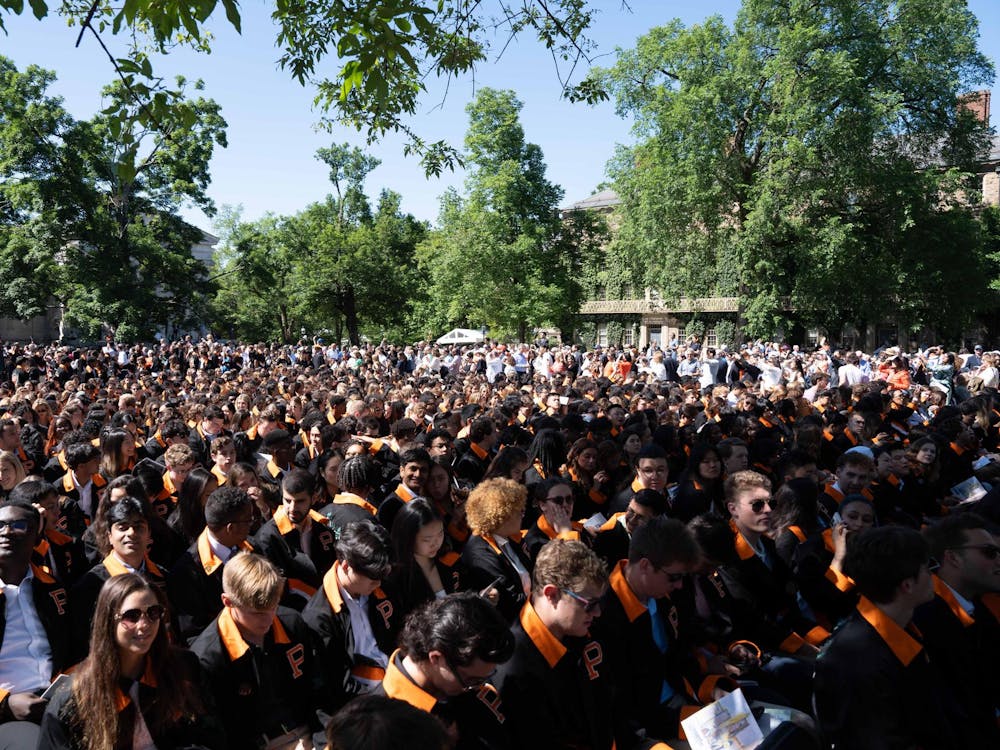The story of former Princeton professor Maitland Jones, recently terminated from New York University after students signed a petition calling his organic chemistry class too hard, is all too familiar. You can find similar complaints about professors throughout the course reviews of Princeton’s intro classes, in associate Opinion editor Lucia Wetherill’s deconstruction of weed-out pre-med classes, and in columnist Abigail Rabieh’s critique of MAT 202: Linear Algebra with Applications last spring. The complaints include midterms with absurdly low averages, seemingly nowhere near enough office hours to meet students’ needs, a lack of lecture recordings, among a host of other grievances.
And yet, the response all over my Twitter feed to the story was contempt for the students who could not make it through the class. Legal blogger Ken White put it succinctly:
“Anyway now they’re your doctors. Good luck!”
No one can seriously think that having a hard time with a sophomore course actually prevents you from being a good doctor, right? Students have consistently claimed that the problem with Jones’s class was not the content, but rather an outmoded standard of instruction that didn’t give students the tools they needed to succeed. But this speaks to the fundamental divide. Students want grades to reflect that given all the resources they needed, they mastered the content. Society wants grades to show which students succeeded and which floundered in a difficult class. While we can’t say which is more valuable, schools should be optimizing for learning — not arbitrary faux-geneocratic sorting.
In order to see what students want in a class, we can look at the classes that they like. Among a sea of introductory STEM classes with poor or middling course ratings, COS 226: Algorithms and Data Structures stands out. The course is consistently popular. And there’s something else to know about COS 226: it gives a whole lot of As. Any student that gets above a 90 percent average is guaranteed at least an A-, and many students hit that threshold because they can test all their programming assignments to see if they work before submitting them. So maybe this proves the critics of the modern student right: all students want is higher grades.
No, sayeth the COS 226 defenders, COS 226 is popular because it gives students what they need to succeed. Students have access to almost a decade worth of practice exams, with the promise that the exam they’ll take will be of a very similar style. Comprehensive slides are posted for every single lecture and there are daily help sessions with experienced TAs to help students finish the lab. If a student didn’t grasp the material, they can remedy the problem, rather than just struggling on their own. The grades aren’t inflated, students will say — students are just given the resources they need to perform at a much higher level.
This is the optimal model then — students learn more, get more support, and get higher grades. So it would make sense to petition the school when a professor is teaching a rigorous course without providing enough office hours, feedback, recordings, practice exams, and expectations to get students up to that level. If they did, it would be a win all around.
But haven’t we forgotten to ask someone? “No!” moans the McKinsey interviewer. “No!” wails the med school admissions officer. “No!” whimpers the Amazon recruiter. If everyone gets an A, they ask, how will we know which ones are the smartest?

“But why do you care?” we retort. We’ve already demonstrated that if you give students the tools to succeed, they all learn the subject better. But the gatekeepers of the professional class don’t care if you’ve, with time and effort, mastered organic chemistry or algorithms and data structures or linear algebra. They want to know who the smartest students are. They want the students who somehow made it through a miserable class where all the lecture notes were scribbled down by a parrot with poor penmanship, the exams were unannounced and based on a paper the professor never assigned, and the lectures were held at 3 a.m. on a Saturday and there was no recording. They don’t care if that student never learned a thing in that class or passed with a 25 percent because only half the class hit the five percent mark. Because when Ken White is lying on the operating table, he doesn’t actually care if the doctor knows organic chemistry — he wants to know that the doctor has the highest IQ possible.
Princeton students don’t care about IQ. We may be skeptical about merit, but if you ask a student to define it, it involves how you perform in a fair test, with all the resources you need to succeed if you tried. But for the high-paying roles that many Princeton students aspire to, society doesn’t care about subject knowledge or success under good circumstances. They’re paying for their employees to think on the fly — you can see that reflected in the lightning-round coding challenges that students have to complete to get jobs in Big Tech companies or on-the-spot problem-solving (known as “casing”) to get into consulting. Companies and professional schools already sort applicants by leveraging the admissions process to preference students from elite colleges. But, especially in STEM fields, they further rely on weed-out classes and a high variance in grades, not to ensure competence, but to capture those who can rise above their peers under suboptimal circumstances.
I can’t say for certain that the companies and medical schools aren’t right about this. Maybe succeeding in a course as well-structured as COS 226 says nothing about your ability to make it in the real world or think on your feet. But ultimately it doesn’t matter. We as students can never buy into a system where we have no agency over the process. Even as the professional world tries to sort us by how fast our mind moves, it’s in our interest and our obligation to push to be judged on our accomplishments, knowledge, and skills instead.
It’s in the school’s interest to grade us that way, too. When professors insist on an arcane teaching system, it’s usually in pursuit of what they say is academic rigor. Professors may think that students will have to try harder when grading is harsher, when resources are more spare or when the pace of the course isn’t burdened by the need to review thoroughly in precept or subject to the constraints of a predictable exam. But as we’ve seen, academic rigor is best-served when students have the resources they need to succeed. Schools are supposed to teach students — and classes should fit that goal.

The professional world already has plenty of ways to judge us on our mental agility rather than our achievements — let’s not enable it further.
Hailing from McLean, Va., Rohit Narayanan’s mind moved a lot faster before he was a junior who serves as Community Opinion Editor. He assigns grades to each of his emails that he gets at rohitan@princeton.edu, but the average is inflating rapidly. His tweets @Rohit_Narayanan have never had below a 4.0 and tremble in fear at the prospect of an A-.








